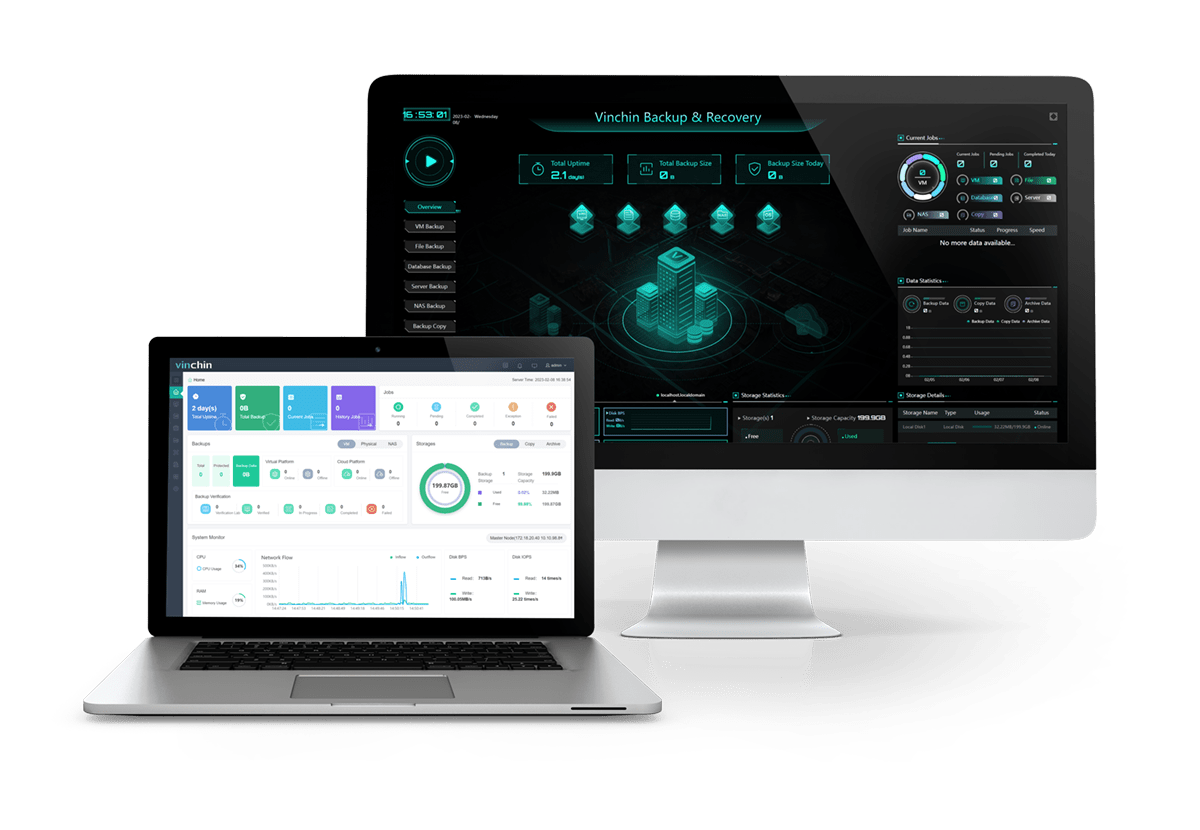What is Disaster Recovery in Cloud Computing?
2023-09-14 | Iris Lee
Nowadays, technology is developing rapidly, and various Internet products and applications are becoming more and more integrated into our lives. As an emerging and powerful technology, cloud computing is becoming the first choice for enterprise and personal data processing.
However, although the convenience and efficiency of cloud computing have been widely recognized, in some cases, the underlying infrastructure or application software of cloud computing may encounter unexpected failures or human damage, resulting in loss of application data or even system paralysis. In order to prevent these problems, cloud computing disaster recovery has become particularly important.
What is disaster recovery in cloud computing?
A disaster recovery system refers to the establishment of two or more sets of IT systems with the same functions in remote places that are far apart. They can perform health status monitoring and function switching between each other. When one system stops due to an accident (such as fire, earthquake, etc.) , the entire application system can be switched to another location so that the system functions can continue to work normally.
Cloud disaster recovery, as the name suggests, is cloud-based disaster recovery, which provides enterprises with data disaster recovery and backup services in the form of cloud services.
Cloud computing disaster recovery refers to a comprehensive service used to ensure the security and continuity of enterprise data. The main purpose is to ensure the availability of enterprise data assets through backup, recovery and recovery testing, and to reduce the losses caused by factors such as system failures and natural disasters.
Why choose disaster recovery in cloud computing?
Combined with the many advantages of cloud platforms such as computing, storage, and bandwidth, cloud disaster recovery has many advantages over local disaster recovery:
1. Safe backup
Many organizations have backup systems that are integrated directly or indirectly with existing production systems. However, when many disasters occur, they will also have an impact on the current network system, thus affecting the associated backup data and systems. The cloud platform used for cloud disaster recovery generally has infrastructure such as highly reliable and high-standard off-site cloud data centers, so that backups can be safely stored off-site.
In summary, cloud disaster recovery services have unique service features of high performance, high reliability, high scalability, easy maintenance, low liability risk, and high cost performance, which can protect government and enterprise data assets and business systems.
2. Reduce costs
Traditional storage systems mainly implement data redundancy and data recovery through RAID, and equip the host with two or more disk arrays for each hardware part such as CPU, memory, network card, to prevent single points of failure. So when a component fails, the alarm mechanism will notify the administrator to troubleshoot and replace the corresponding failed component.
The cloud storage system mainly uses a large number of cheap ordinary hosts. It is based on the network and uses distributed collaboration software to disperse and store data on a number of general storage servers. It conducts comprehensive management through copy or encoding methods to provide users with reliable and unified logical storage space.
Using more economical and flexible cloud storage for backup based on specific needs can eliminate the hardware purchase and maintenance costs of building a self-built data center, achieve refined management of resources, and reduce disaster recovery expenses.
3. Quick recovery
With the emergence of cloud disaster recovery and cloud high availability, recovery time can be accurately estimated in advance to ensure that downtime is within an acceptable and reasonable range.
4. High mobility
Based on virtualized cloud computing technology, it is possible to maintain stable operation of the system in the cloud when the master node is abnormal and unable to provide services.
5. High flexibility
Cloud disaster recovery makes it easier to evaluate business needs, and users can more accurately estimate which system or even which subsystem needs maintenance. You can also select key data in a more fine-grained manner to optimize your own backup plan, and set RPO more accurately, rather than fully backing up the entire data.
6. Pay as you need
Unlike traditional disaster recovery solutions that require the establishment of a disaster recovery center with a completely corresponding architecture, cloud disaster recovery can use cloud infrastructure or a disaster recovery-as-a-service model (DRaaS), allowing users to freely select important systems and data. Because the underlying architecture is shared by other companies using the same cloud computing solution and the costs are shared, users only pay for the resources actually used, thus greatly reducing the waste of resources and improving efficiency.
7. Reduce infrastructure
Without purchasing traditional disaster recovery servers and rely on the computing and storage platforms provided by cloud platform providers, or directly use DRaaS application services, users no longer need to purchase new storage devices, saving more physical space and IT resources and free up related maintenance personnel to participate in other work.
Therefore, cloud disaster recovery, as a service of cloud computing infrastructure, can undoubtedly provide great convenience and help to enterprises, and can effectively alleviate and respond to the pressure caused by disasters.
Cloud disaster recovery vs. traditional disaster recovery
Cloud disaster recovery | Traditional disaster recovery | |
Advantages |
|
|
Disadvantages |
|
|
Risks of cloud disaster recovery
Security: The biggest issue is the multi-tenant nature of the cloud environment hosting the backup environment or data.
Recovery: Consideration should be given to asset prioritization, service level agreements (SLAs) and connection bandwidth between the original and backup environments.
Data Control: Be sure to read the Terms of Use and pay attention to the details.
Disruption: Cloud computing environments are not perfect. It's wise to consider this risk as part of your overall disaster recovery strategy.
Cloud disaster recovery is an attractive option for organizations of any size. As enterprise infrastructure continues to become more virtualized, more and more data and IT operations are moving to cloud platforms. Therefore, their disaster recovery strategies need to continually evolve.
How to design a disaster recovery plan in cloud computing?
Designing a disaster recovery (DR) plan in cloud computing involves several key steps to ensure the effective protection and recovery of critical systems and data. Here is a general framework to help you design a cloud-based disaster recovery plan:
Business Impact Analysis (BIA)
Conduct a thorough assessment of your organization’s critical systems, applications, and data to determine their importance to the business. Identify recovery time objectives (RTOs) and recovery point objectives (RPOs) for each component based on business requirements.
Risk Assessment
Define Recovery Strategies
Select a Cloud Service Provider (CSP)
Data Replication and Backup
Failover and Failback Procedures
Security and Access Controls
Testing and Training
Vinchin solution for cloud disaster recovery
As a professional data protection solution provider, Vinchin owns the leading disaster recovery technology to all kinds of data security problems and provides reliable disaster recovery solutions to every client in many industries.

Vinchin Backup & Recovery is a professional solution which supports data backup of VM like VMware vSphere, Hyper-V, XenServer, XCP-ng, oVirt, RHV, OpenStack, etc. and other data like database, NAS, file server, etc.
Vinchin Backup & Recovery can not only meet the data backup requirements of traditional information business environments (offsite backup), but also seamlessly support data protection by achiving the backup data to the publich cloud.
You can archive the local backup file to cloud object storage for long term retention and DR with Vinchin Backup Archive. In case the primary backup got destroyed together with production data, you can transfer back the VM data from archived backup file in the cloud and restore to onsite production system. Vinchin Backup & Recovery supports the mainstream cloud platforms like AWS S3, Microsoft Azure, Wasabi, and MinIO as cloud archive destination.
You can start to use this powerful system with a 60-day full-featured free trial. Just click the button to get the installation package.
Conclusion
A cloud disaster recovery plan is advantageous to a traditional disaster recovery plan in practically every way. From simple deployment to lower costs, and faster recovery, it is a viable strategy for organizations of any size.
Share on:



 English
English


















